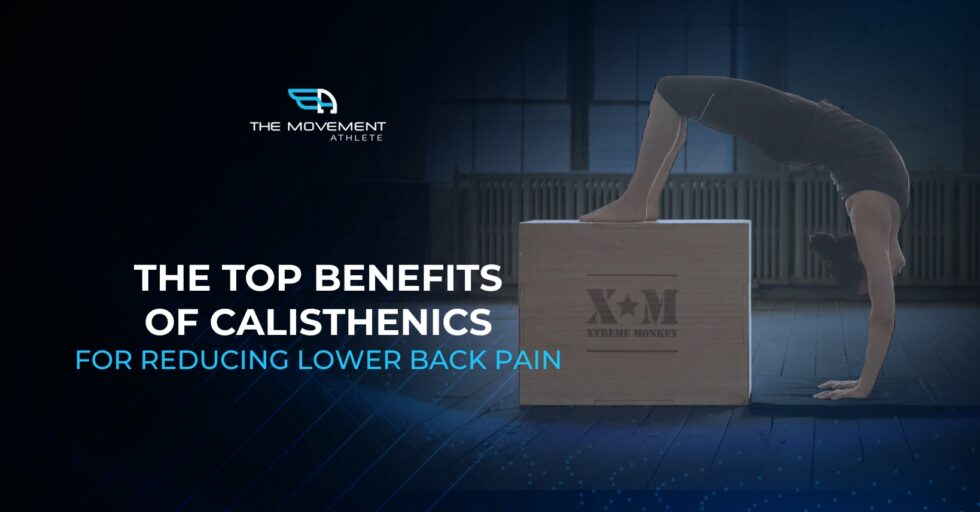
Struggling with lower back pain? You’re not alone, as some 16 million adults—8% of all adults—experience persistent or chronic back pain.
The journey to relief can feel endless, with options ranging from medications and surgery to ongoing physical therapy. It’s crucial to visit a doctor to determine what’s causing it.
On a brighter note, knowing that calisthenics can offer relief is reassuring. Research suggests bodyweight exercises may be beneficial, safe, and cost-effective for addressing lower back pain.💯
With exercises like planks and bridges, which focus on your core, you’ll support your lower back and improve your everyday movements.
Let’s delve into the top benefits of calisthenics for reducing lower back pain.
What is Calisthenics?🤯
So, before we get any further, let’s talk about calisthenics.
Calisthenics is an exercise in which you use your body weight as resistance. Think push-ups, pull-ups, squats—all that good stuff that increases your strength, flexibility, and endurance.
The best part? You don’t need fancy equipment, making it perfect for anyone looking to fit in their own space on their terms.
The Movement Athlete app is a great resource for anyone interested in calisthenics. It offers structured training programs that leverage bodyweight exercises to increase strength, flexibility, and endurance.
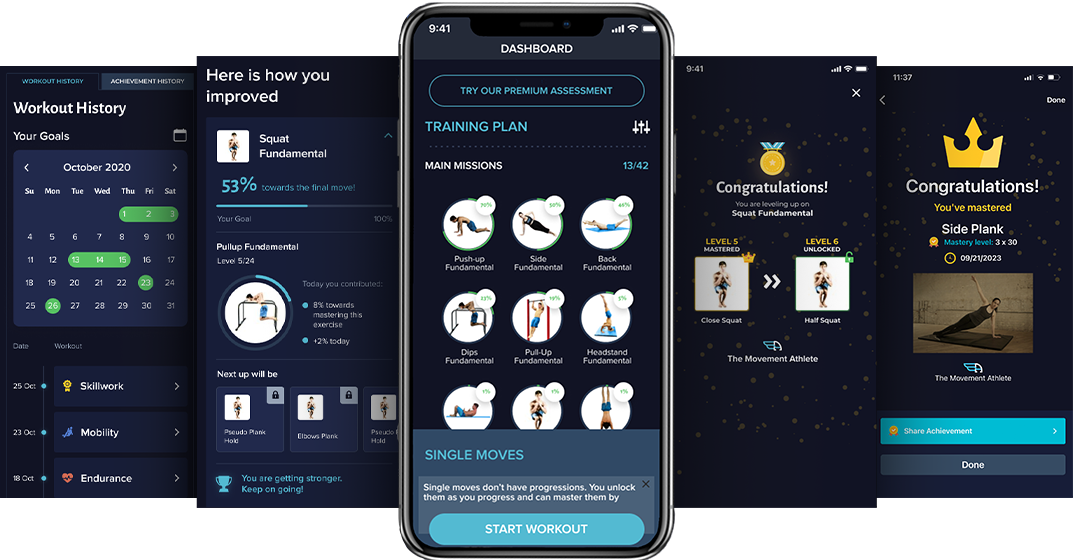
The app is designed to help users progress at their own pace, making it suitable for beginners and advanced athletes. With personalized workouts that adapt to your fitness and capabilities, it’s a comprehensive tool for those looking to enhance their fitness through calisthenics.
🏆Benefits of Calisthenics for Overall Fitness
So, why join calisthenics? It’s simple – it’s about more than just getting those gains here. Here are your top reasons to join calisthenics:
- 🔥 Full-Body Strength: This exercise engages major muscle groups for comprehensive strength development. A Harvard Health study indicated that bodyweight exercises contribute to muscular strength and endurance development, regardless of the absence of external loads.
- 🔥 Functional Fitness: Mimics real-life movements, enhancing practical fitness.
- 🔥 Flexibility and Mobility: Promotes a broader range of motion for improved joint flexibility.
- 🔥 Body Control: Precision in movements fosters better coordination and body awareness.
- 🔥 Cardiovascular Health: Includes dynamic exercises for improved heart health and stamina.
- 🔥 Cost-Effective and Accessible: Requires minimal equipment and can be done in various settings. Calisthenics can give you results similar to those when you do weight training, which is supported by a study in 2017 published in the Journal of Exercise & Fitness. The research revealed that push-up training and low-load bench press exercises have similar results in muscle thickness.
- 🔥 Versatility: Offers various exercises adaptable to different fitness levels.
- 🔥 Lean Muscle Development: Builds lean muscle without excessive bulkiness.
- 🔥 Adaptable: Modifiable for beginners to advanced athletes, supporting gradual progression.
- 🔥 Bodyweight Control: Emphasizes mastery of body weight, enhancing body awareness.
- 🔥 Improved Posture: Strengthens core and back muscles, promoting better posture. According to a study, calisthenics is a feasible and effective solution for enhancing posture, strength, and body composition without requiring major training equipment.
- 🔥 Enhanced Mental Well-Being: Regular workouts reduce stress and improve mood. A 2015 study involving 73 participants with neurological and chronic inflammatory conditions demonstrated that calisthenics could benefit psychological well-being.
The versatility of calisthenics exercises allows for a holistic approach to fitness, engaging multiple muscle groups simultaneously.
🔑Keys to Calisthenics Training
The key to successful calisthenic training is understanding and implementing its core principles.
Implementing the following can help you on your journey to improved physical fitness, injury prevention, and overall health:
- 👊 Personalization: The art of calisthenics training thrives on personalization – creating a unique fitness narrative that matches individual fitness levels and objectives. Adjusting exercises to align with one’s potential creates a path for consistent progression and sustainable training.
- 👊 Adaptability: The beauty of calisthenics emphasizes adaptability, courtesy of its flexibility to modify exercises according to one’s current capabilities. This makes the workout challenging yet achievable, ensuring continuous growth.
- 👊 Progression: The cornerstone of calisthenics training is progression, which encourages a gradual, advanced challenge to induce constant enhancement. This could be through diversified variations, amplified repetitions, or the introduction of progressive movements as you improve.
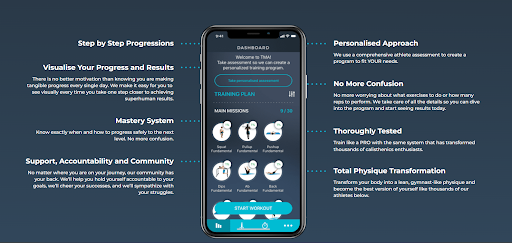
True to these principles, the Movement Athlete App has been created to encapsulate personalized, adaptable, and progressive calisthenics training. By providing personalized workout routines, the app ensures a dynamic, effective, and engaging training session tailored to your fitness levels and goals.
Equipped with an adaptive edge, the app empowers you to modify your workouts according to your evolving abilities and preferences. Its progressive approach provides a structured pathway to test your limits and consistently attain sustainable fitness growth.
The Movement Athlete App, focusing on individualized and continuously evolving training experiences, personifies the fundamental principles that make calisthenics a rewarding fitness discipline.
The Movement Athlete App also presents a comprehensive assessment to help you comprehend your fitness level and modulate your training accordingly. This unique assessment is engineered to provide insights into your strengths, weaknesses, and areas of opportunity within the calisthenics framework.
✨Calisthenics and Lower Back Pain
All the muscles💪 that make up your lumbar area do a lot of work. But, with all that hard work, sometimes problems can pop up. It’s like when you’re the main person everyone relies on in a group project—you end up doing too much, and soon enough, you start feeling it for real.
So, why do you need to know these common lower back issues? 🤔
Knowing what can go wrong is a huge step in keeping things right. With this knowledge, we can work on strengthening, balancing, and taking care of our lower back, ensuring it has all the support it needs to keep us moving smoothly and pain-free.
Listed below are some common lower back issues:
- 🥺 Muscle Strains
They’re pretty common, especially if you move quickly, lift something incorrectly, or go too hard. It’s like pulling a rubber band too far—ouch! You end up with pain, stiffness, and maybe even some muscle spasms.
- 🥺 Herniated Disc
Then there are herniated discs, or, as some call them, slipped discs. Imagine the cushions between your spine’s bones pushing out where they shouldn’t. Not fun, right? This can press on nerves, giving you pain, that weird numb feeling, or weakness.
- 🥺 Poor spinal mobility
Your spine’s flexibility might suffer if you’re not moving enough or not balancing your muscle strength. It’s like when your phone freezes; everything just kind of stiffens up and doesn’t work either. This can make moving around feel more like a chore than it should.
- 🥺 Chronic Lower Back Pain
Chronic lower back pain is another level. It sticks around, making everyday stuff harder and can lower one’s quality of life. It’s like a bad internet connection that just won’t let up.
- 🥺 Posterior Chain Weakness
And, if the backside of your body—the posterior chain—isn’t strong enough, it’s like your body’s foundation isn’t solid. You need strength to stabilize everything and help with your posture and movement.
- 🥺 Imbalanced Core Muscles
Speaking of balance, if your core muscles aren’t working together properly, it throws everything off. Imagine a team that doesn’t perform smoothly because everyone isn’t pulling their weight.
- 🥺 Weak Glutes
Weak glutes are another issue. They’re key players in keeping your pelvis stable and supporting your spine. If they’re not up to par, you might find your lower back picking up the slack, and that’s when problems can start.
- 🥺 Lower Back Instability
Lastly, lower back instability and poor posture are the sneakier problems. If your lower back isn’t well-supported or you are slouching, it’s a recipe for discomfort, fatigue, and even injury.
🥇Top Benefits of Calisthenics to Reduce Lower Back Pain
Lower back pain usually happens because those muscles around your spine are weak or tight. Then you might wonder how calisthenics fits into the picture.
Calisthenics offers a natural, effective approach to reducing lower back pain. By doing exercises like planks, bridges, and bird dogs, you strengthen those muscles and improve your posture simultaneously.
Let’s get into details as to how strengthening the lower back with calisthenics helps reduce lower back pain:
- ✔️ Core Strengthening: By engaging and strengthening the core muscles, calisthenics helps stabilize the lower back, providing support and reducing strain.
- ✔️ Improved Posture: Many calisthenics exercises encourage proper alignment and posture, alleviating pressure on the lower back and reducing pain.
- ✔️ Flexibility Enhancement: Increasing flexibility through calisthenics can reduce stiffness and improve range of motion, easing lower back discomfort.
- ✔️ Balanced Muscle Development: Calisthenics promotes the development of a balanced musculature, preventing imbalances that can lead to lower back pain.
These benefits make calisthenics a valuable tool in managing and preventing lower back pain.
💥Best Calisthenics Exercises for Relieving Lower Back Pain💥
Several calisthenics exercises are particularly effective for relieving lower back pain by strengthening the core, improving flexibility, and enhancing overall back health. Here are some of the best:
- 💪 Planks: Planks are excellent for strengthening the core and supporting the lower back. Ensuring proper form is key to maximizing benefits and avoiding additional strain.
- 💪 Bridge: The bridge exercise targets the lower back, glutes, and hamstrings, helping to alleviate tension and strengthen the muscles around the spine.
- 💪 Bird Dog: This exercise enhances core stability and balance, strengthening the lower back and abdominal muscles without placing undue stress on the spine.
- 💪 Cat-Cow Stretch: This gentle flow between two positions helps increase spine flexibility, encourages mobility, and relieves tension in the lower back.
- 💪 Dead Bug: The dead bug exercise focuses on core strength and stability, crucial for supporting the lower back and reducing pain.
- 💪 Pelvic Tilts: Pelvic tilts strengthen the abdominal muscles and stretch the lower back, helping reduce pain and improve posture.
Incorporating these exercises into your routine can help manage and alleviate lower back pain. However, it’s important to perform them in proper form and consult with a healthcare provider or physical therapist, especially if you’re dealing with significant pain or specific medical conditions.
Dive into the Movement Athlete app to discover a carefully curated list of “Back Fundamental” exercises meticulously designed for your lower back. This goldmine is ideal for those seeking specific workouts to fortify lower back strength, enhance flexibility, and alleviate pain.
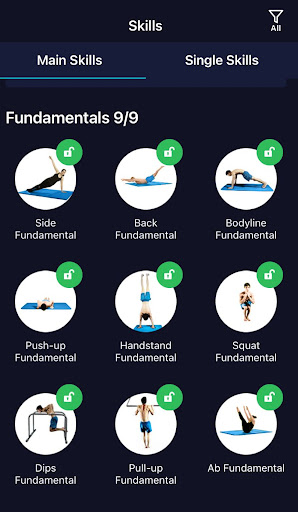
Far from being random, these exercises form part of a strategic plan focused on cultivating a robust, healthy back and ensuring the muscles supporting your spine work in perfect synergy.
By incorporating these back fundamentals into your routine, you can access a tailored program that addresses the unique needs of individuals suffering from lower back pain, all while promoting overall back health and mobility.
🧐Frequently Asked Questions
🔎How does calisthenics help lower back pain?
Calisthenics exercises strengthen the muscles surrounding the lower back, including the core, glutes, and hip flexors. It increases muscle strength and provides better support for the spine, reducing strain and alleviating lower back pain.
🔎Which calisthenics exercises are best for lower back pain relief?
Effective calisthenic lower back pain relief exercises include planks, bird dogs, bridges, and hollow body holds. These exercises target the core muscles, improve stability, and reduce strain on the lower back.
🔎Can calisthenics help with chronic lower back pain?
While calisthenics may not cure chronic lower back pain, it can provide significant relief and improve overall spinal health. It strengthens muscles, improves flexibility, and promotes better posture, all of which can help manage chronic pain.
🔎Can I still do calisthenics if I have a history of lower back surgery?
It is important to consult with a healthcare professional before beginning any exercise routine, particularly if you have undergone surgery in the past. They can provide tailored recommendations and modifications based on your medical history and current condition.
🔎Are there any specific calisthenic exercises I should avoid if I have lower back pain?
Specific exercises, such as deep backbends or heavy weighted movements, may exacerbate lower back pain for some individuals. Listening to your body and avoiding exercises that cause discomfort or strain your lower back are essential.
📌Conclusion
Calisthenics stands out as a highly effective remedy for lower back pain. It embodies a holistic approach to addressing the underlying causes of discomfort. It tackles lower back issues at their roots by zeroing in on core strengthening, boosting flexibility, and fostering improved posture.
Incorporating regular calisthenics exercises into one’s routine is not just about temporary relief; it’s a journey towards building a more resilient spine, mitigating pain, and elevating overall spinal wellness. Its accessibility and adaptability across various fitness levels render calisthenics a practical and inclusive solution for those seeking liberation from lower back pain.
Moreover, the Movement Athlete app underscores the significance of this approach with its “Back Fundamental” exercises, tailored to fortify the lower back. This platform reinforces the benefits of calisthenics, offering a structured pathway to alleviate pain and cultivate a stronger, healthier back.
Incorporating calisthenics into a holistic wellness plan aims to reduce pain and builds a future of stronger back health and freedom from chronic discomfort.
Looking to elevate your lower back calisthenics game? Kick off your calisthenics journey with a personalized training plan tailored just for you!
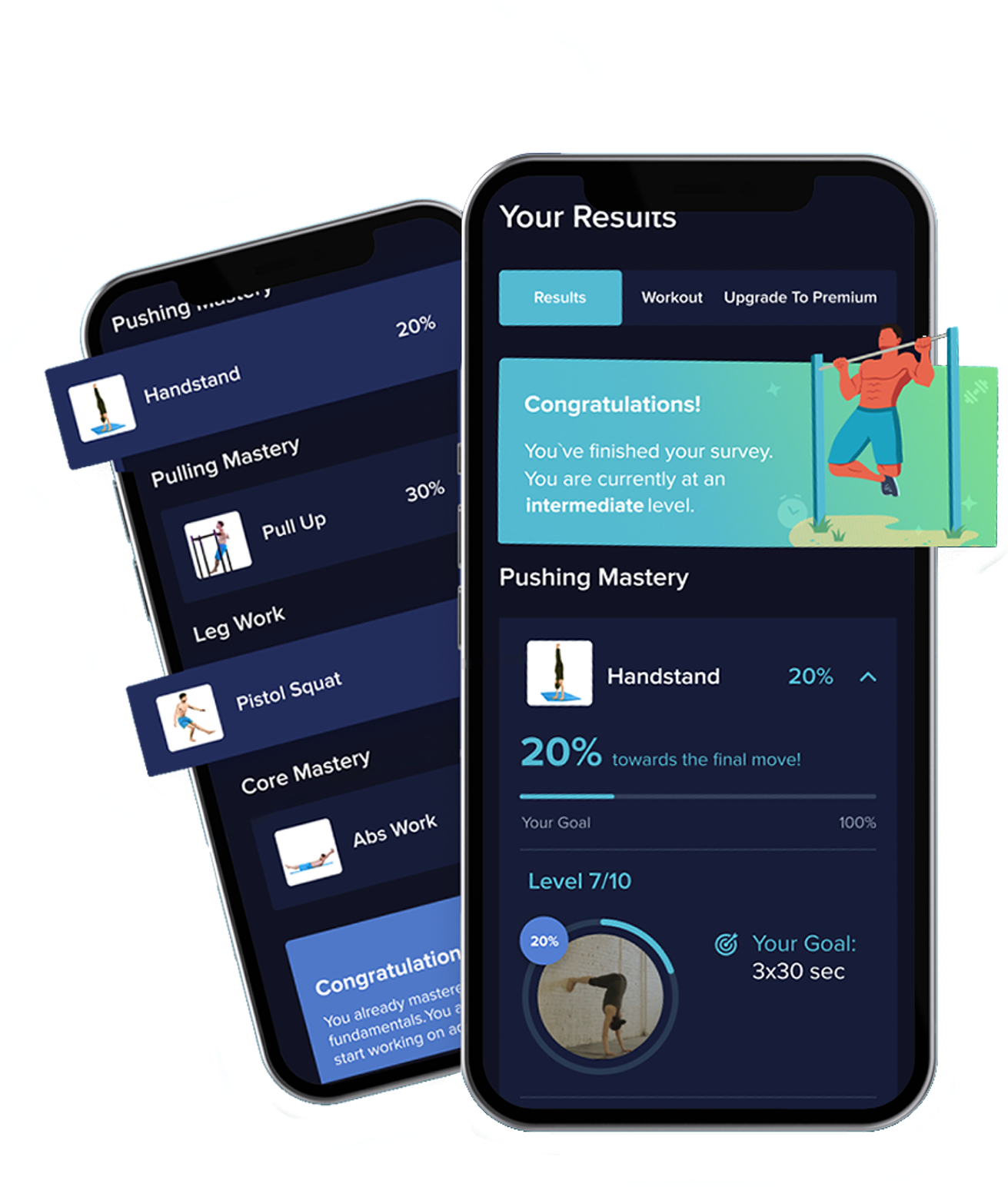
Simply take a free, 5-minute assessment from the Movement Athlete and get a customized workout plan with specific recommendations to get you started.